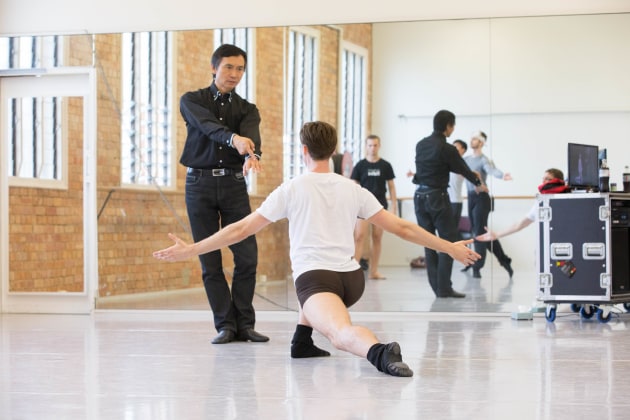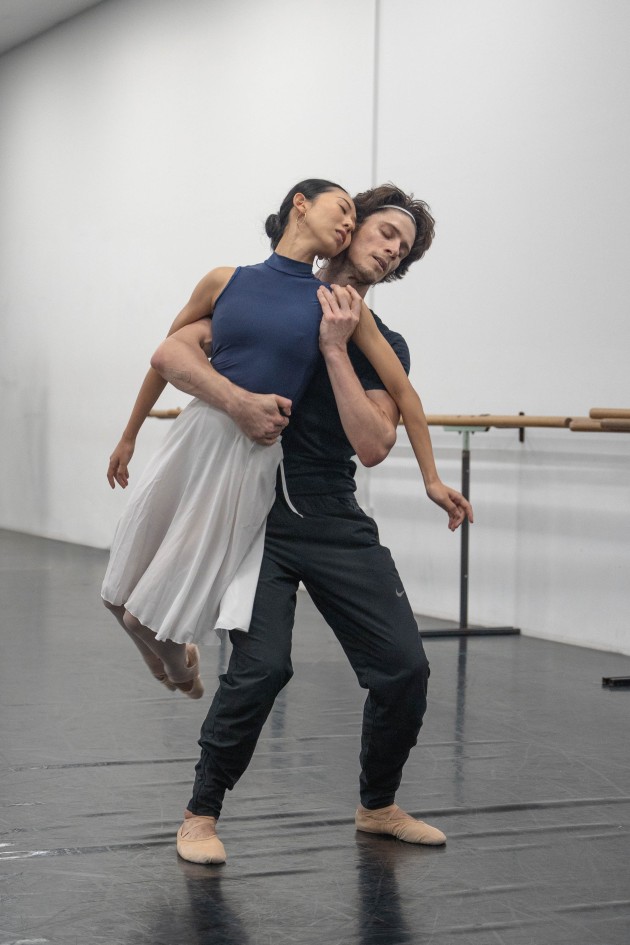Li Cunxin has notched up 10 years leading the Queensland Ballet. Karen van Ulzen caught up with him in Brisbane before the premiere of his celebratory show.

When Li Cunxin took the helm of the Queensland Ballet (QB) 10 years ago, he was always clear about his ambition: he wanted to build a world class company. It didn’t matter that the Queensland Ballet is a state company with less funding and resources than the equally ambitious Australian Ballet company down south – there's plenty of room in one country, after all, for more than one world-class company.
Ten years later, despite the two-year setback of the pandemic, Li is quietly satisfied with his progress. His business savvy, his artistic credentials, the respect of his peers and his immense personal popularity have combined to see the company’s reputation soar, both in Australia and overseas. In recognition of his achievements, he was awarded an Order of Australia (AO) in 2019.
No doubt his celebrity status as Mao’s Last Dancer has a little to do with his success, too. Not too many artistic directors would have a name that is familiar to both dancers and taxi drivers.
While the company Li inherited was in respectable shape, since he took the reins ticket sales have skyrocketed, from a total of about $1.7 million in box office revenue in 2012 to approx. $5.361 million in 2019. The number of corporate sponsors and benefactors has also burgeoned, and includes Suncorp Group (since 2014) and Shell QGC and an enviably long list of private supporters.

Most importantly, Li has also increased the number of dancers in the company, from 23 to 60 – a size he feels is just right for the classical repertoire. The number includes dancers from the Jette Parker Young Artists apprenticeship program, which he also established. To ensure a supply of talented dancers Li also established the Queensland Ballet Academy, catering to beginners through to pre-professionals, and even built customised studios for the school at Kelvin Grove Academy (with willing support from the Qld Government). That facility is one plank of an ambitious capital works program - what he refers to as his three sites/one vision – the academy, a production facility on the Gold Coast and, most impressive of all, a massive, multi-million dollar renovation and expansion of the company headquarters in the West End. This is no mere “fit out” – the new facilities comprise three floors, six vast studios, a 350 seat theatre, entertainment areas and viewing galleries for the public, and wonderful facilities for the dancers. All of them “world class”. There is little doubt that such a facility is not just a new home for the company, but a cultural milestone for Australia.
“I wanted a world class company,” he says simply, “so I needed world class facilities.” And Li being Li, that's what he's got.
The company plans to open its new home in July. At the time of this interview, however, all staff were still making do in a temporary home beside the Brisbane river (which narrowly avoided being inundated during the Brisbane floods) where they moved to make way for the renovations. Cunxin is trim, light on his feet and as charming as ever, seeming to shoulder the huge responsibilities of his role as easily as he raises a ballerina above his head. His little poodle snuggles against his feet as we talk.
To celebrate Li’s 10 years, QB is staging a program called “Li’s Choice”. A triple bill, his “choices” reflect, in a small way, his programming theme over the years: strictly classical, a mix of proven repertoire and newer, contemporary works, “complementary but different”, he says. He has been respectful of the company’s history and legacy (he makes a point of saying he is the company’s fifth artistic director). His repertoire choices reflect his faith in the great classical works to entertain as well as his loyalty to the talent at home.
The celebratory program comprises We Who Are Left by Natalie Weir, a choreographer who has long been his favourite and who he appointed as one of two resident choreographers (the other, sadly, was the late, prodigiously talented UK choreographer, Liam Scarlett). “Natalie's very inventive, very creative, but also she is one of the not many choreographers around the world who can create beautiful contemporary works on classical ballet dancers. She can push classical dancers into a contemporary space. She really has the talent to marry the two. We Who Are Left is so moving and beautiful.”

Also Australian is Greg Horsman, whose Glass Concerto is on the bill. Horsman, formerly one the Australian Ballet’s most poetic and classical of principal artists, is Chief Ballet Master and Director of Artistic Operations at the QB and has been responsible for a number of highly successful adaptations of the classics – such as his Coppelia - set in South Australia's Hahndorf.
Third on the program is a small gem of the classical repertoire, Elite Syncopations, by the late master choreographer, Sir Kenneth MacMillan. Two of Li’s proudest additions to the QB repertoire are MacMillan’s Romeo and Juliet and Manon. Both ballets require the permission of MacMillan’s widow, Lady Deborah, to be performed and Qld Ballet is one of only a few companies in the world to have been granted the honour. Elite Syncopations has a special place in Li’s heart as he performed it himself when he was with Houston Ballet – the first company he joined after defecting to the West from China in 1981.
“I love that piece. It’s a lot of fun and humour, gets the dancers out of their classical mould, makes them move to fun music. I think the audience always loves that kind of fun ballet.”
Before Li was appointed artistic director of the QB, he had worked as a senior manager at Bell Potter, one of the largest stockbroking firms in Australia. This therefore made him “a bit of an oddity” (his words) in the performing arts industry, but it also equipped him well. “It has been a huge advantage,” he acknowledges, “being able to mix with the corporate world and understand their language”, and when working alongside the QB's executive director.
His sense of financial efficiency led him to initiate a number of choreographic co-productions with other ballet companies. “Even before I became a director, I always questioned why there weren't more collaborations between ballet companies. For me it's just business thinking; how do you stretch your dollar? If you spend half a million on a production, but only perform it once every five or six years, your asset is just sitting there on the shelf.” Co-productions at his initiative include Liam Scarlett’s A Midsummer Night’s Dream with the Royal New Zealand Ballet, Marc Ribaud’s La Fille mal gardee and Horsman’s Coppelia and La Bayadere with the West Australian Ballet (the latter a three-way collaboration with Royal Winnipeg Ballet, Canada), and Carlos Acosta's Carmen (with England’s Royal Ballet and Texas Ballet Theatre).

When I ask him what has been his biggest challenge over the decade, it is the dancer in him that replies. He may have navigated difficult financial decisions and negotiated with the titans of industry, government and the arts, but the responsibility he feels most keenly is the management of the aspirations of his dancers.
“It is the most challenging for a director to manage every one of the 60 dancers’ expectations, and their aspirations, and not to crush their dreams. Everyone joining a company like ours has big dreams, and they all have that talent. Not everyone is going to get there. How do you manage that and keep their motivation up, to have a satisfying career regardless of [their rank]? That’s the hardest part, to have that empathy, that sympathy and understanding, with those dancers when they think they should be cast in, for example, in Romeo and Juliet, how do you prop them up, stop them becoming disillusioned?”
Li of course had his own dreams and aspirations as a dancer, and again when he joined the QB in 2013 – a moment he says changed his life. “This journey has enriched my life and offered so much fulfilment and joy, as well as challenges that have dared me to dream fearlessly and push past what seems impossible to truly see game-changing, and at times life-changing, outcomes.
“There’s still many dreams left to see come to fruition, and we can’t wait to share them with our community.”
'Li’s Choice' will run from June 10 to 25 at the Playhouse, QPAC. More info here.
This is a short version of the full interview to be published in the July/Aug/Sep issue of 'Dance Australia'. Read Li's views on cancel culture, the push for female choreographers, and more. Subscribe here and never miss an issue!





